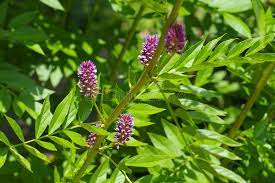Liquorice is considered a medicinal crop whose plants are bushy. Its origins are used for medicinal manufacture. Liquorice is sweet, and glycyrrhizic acid, liquorice calcium, antibiotic, anti-oxidant, protein and fat are abundant. By consuming it, there are benefits for diseases of the throat, heart disease, eye disease, stomach disease, mouth disease, and respiratory disorders. Apart from this, the root of liquorice is also beneficial in conditions like bile, talk, and phlegm. Its origins are used fresh and dried. Moreover, Disc Plough and other implements are used for productive farming.
Soil, Climate & Temperature
To cultivate liquorice, fertile and sandy soil containing organic matter is required. The land for its cultivation should be with proper drainage. In the soggy ground, its plants are prone to many diseases. Apart from this, liquorice can be cultivated quickly in slightly alkaline soil. Between 6 and 8.2 P.H., The land of value is considered suitable for its cultivation.
The liquorice plant is of both warm and temperate climate. Its plants grow well in hot climates, and its plants cannot grow properly in the winter season. Its plants require a maximum of 50 to 100 cm of rainfall. Liquorice seeds need 18 to 20 degree temperature to germinate properly. Its plants can tolerate a maximum temperature of 27 degrees and a minimum of 5 degrees. Plant growth is affected if the temperature is higher or lower than this.
Field Preparation & Fertiliser
Before growing the liquorice crop, its field is adequately prepared. Then, after pressing, leave the field open for some time, due to which the sunlight gets appropriately in the field's soil, and the harmful insects in the soil are destroyed. After the first ploughing in the area, 15 carts of old cow dung manure are put in the form of natural fertiliser, and two to three-slant ploughing is done by applying a cultivator.
Due to this, the manure of cow dung gets mixed properly in the field's soil. After mixing the waste in the ground, it is pulverised by applying water. After ploughing, when the field's soil becomes dry, the area is pressed again, making the earth friable. After the ground becomes friable, the field is levelled with a pat. Organic manure is considered the best for cultivating medicinal liquorice, but some farmers want to use chemical fertilisers. Therefore, they need a bag of NPK at the time of the last ploughing. The amount is to be sprayed based on per hectare.
Transplanting Method
Transplanting liquorice seeds in the summer and rainy seasons is considered appropriate. In summer, sowing of its origins is done in February and March in irrigated places. In irrigated areas, seeds are sowed in July in the rainy season. The roots of liquorice are planted both on the flat and the bund. Rows are prepared in the field for planting seeds on flat land, and a distance of three feet is kept between each row.
Plants are planted in these rows at a distance of two feet. Apart from this, the planting of tubers is done at a depth of 5 to 7 cm.
Irrigation
Liquorice plants do not require much irrigation. After this, light watering has to be done for seed germination, but in the rainy and winter season, its plants have to be watered only once a month. In the summer season, its plants should be irrigated at an interval of 10 to 15 days.
Weed Control
The natural method is used for weed control on liquorice plants. Since its plants are grown medicinally, chemical processes should not be used for weed control. In the beginning, the hoeing of its plants is done one month after sowing the seeds. Its plants require three to four hoeing in the first year at an interval of three months and only two to three hoeing in the second year. After this, in the last year, its plants are ready for digging, due to which they require less hoeing.
Harvesting
Liquorice plants start giving yield after three years of sowing seeds. After three years, dig its plants. Before digging, apply water to the field. This will make the soil of the area soft and easy to explore. Plants should be explored to a depth of two to a half feet. Farmer brothers can use Halo for digging.
The bundles obtained from the excavation are thoroughly washed, cleaned, and dried thoroughly under intense sunlight. After this, they are sent to sell in the market.


No comments yet